One of the most fascinating buildings in Moscow is home to a renowned opera and the most prestigious ballet companies in the world.
In this article, you’ll discover some of the most interesting facts about the Bolshoi Theater and its history, one of the most amazing opera houses in the world.
1. It’s located just north of Moscow’s most famous square
The Bolshoi Theater is an intriguing opera house located just north of Red Square in central Moscow. It’s literally just walking distance away in an area filled with historic landmarks.
This historic Neoclassical structure dates back to the 19th century and is home to 2 renowned performing arts companies, the Bolshoi Opera and the Bolshoi Ballet.
The ballet company is considered to be one of the oldest and most prestigious in the world. The theater itself is part of the Bolshoi Ballet Academy, a world-famous leading ballet school with over 200 performers.
As you’ll soon discover, the current version of the theater has an extensive history that goes back about 2 and a half centuries.

2. The original theater dates back to the year 1780
The original performing arts company was founded in the year 1776. This was the year that Prince Pyotr Urusov was granted a license by empress Catherine II to organize several forms of entertainment in the city.
The company quickly became popular so they needed a permanent venue to perform. Urusov collaborated on this with British entrepreneur Michael Maddox (1747-1822) and together they established the “Petrovsky Theather.”
unfortunately, this predecessor of the Bolshoi Theater was destroyed by fire in 1805. The structure that replaced it, the “New Arbat Imperial Theatre,” was completed in 1808 but ended up being destroyed during the French invasion of 1812 as well.
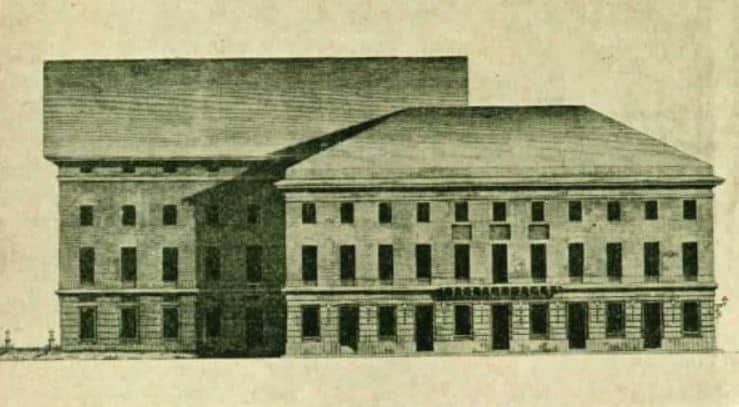
3. The first version of the current theater was built in the early 1820s
The fire of 1812 destroyed large parts of Moscow and architects spent well over a decade rebuilding the city.
This also included Joseph Bové (1784-1834), an Italian-Russian architect who played a major role in the rebuilding of many of the city’s famous buildings.
The first version of the Bolshoi Theater was completed under this Neoclassical architect between 1821 and 1824. This project also included the nearby Maly Theater and Theater Square.
The theater opened its doors as the “Bolshoi Petrovsky Theater” on January 18, 1825.
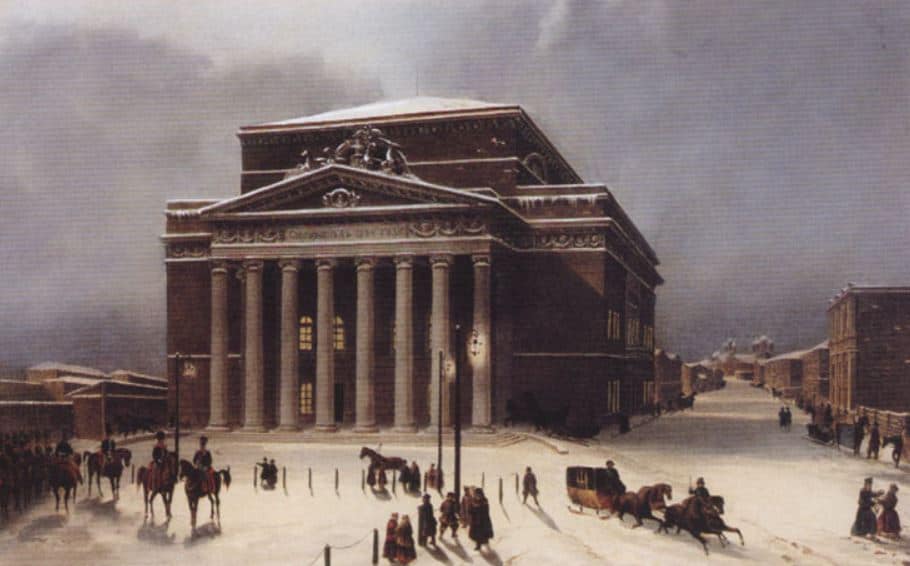
4. The current form of the theater dates back to the 1850s
The first version of the building was expanded tremendously in the 1840s, but just a decade later in 1853, the building was severely damaged by a fire.
The reconstruction was carried out by yet another Russian-Italian architect named Alberto Cavos (1800-1863), and the enlarged theater opened its doors on August 20, 1856.
This eventually didn’t end up to be Cavos’ most famous work because he also designed and supervised the construction of the Mariinsky Theatre, another historic theater in Saint Petersburg that opened its doors in 1860.
As you can see from the image below, the reconstruction by Cavos pretty much resembles how the theater looks today.
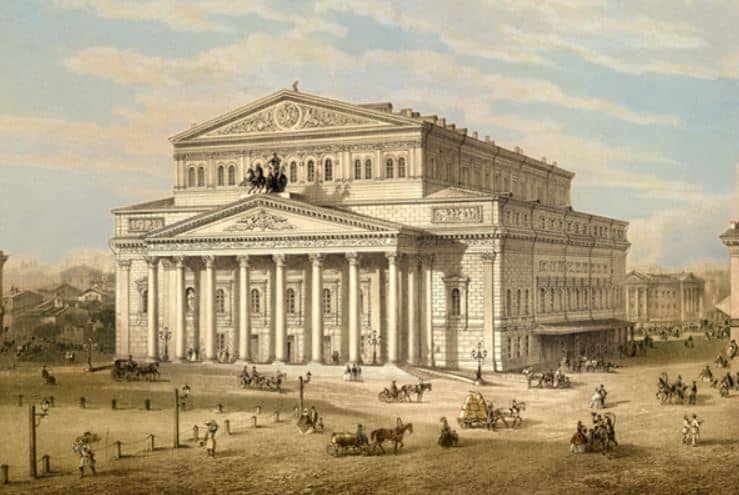
5. It was completely renovated in the 21st century at a staggering cost
Apart from some minor alterations over the course of its history during the late 19th and 20th centuries, not much changed to it all this time.
This was until a huge renovation project started in the year 2005 which lasted all the way to October 2011.
The original price of this project was estimated to be 15 million rubles, the equivalent of about USD 610 million. Because the engineers discovered that large parts of the structure were unstable, this was increased to an astounding 25.5 billion rubles, the equivalent of USD 850 million.
The eventual price was even higher than that as it’s estimated that approximately USD 1.1 billion was spent, a staggering number indeed!
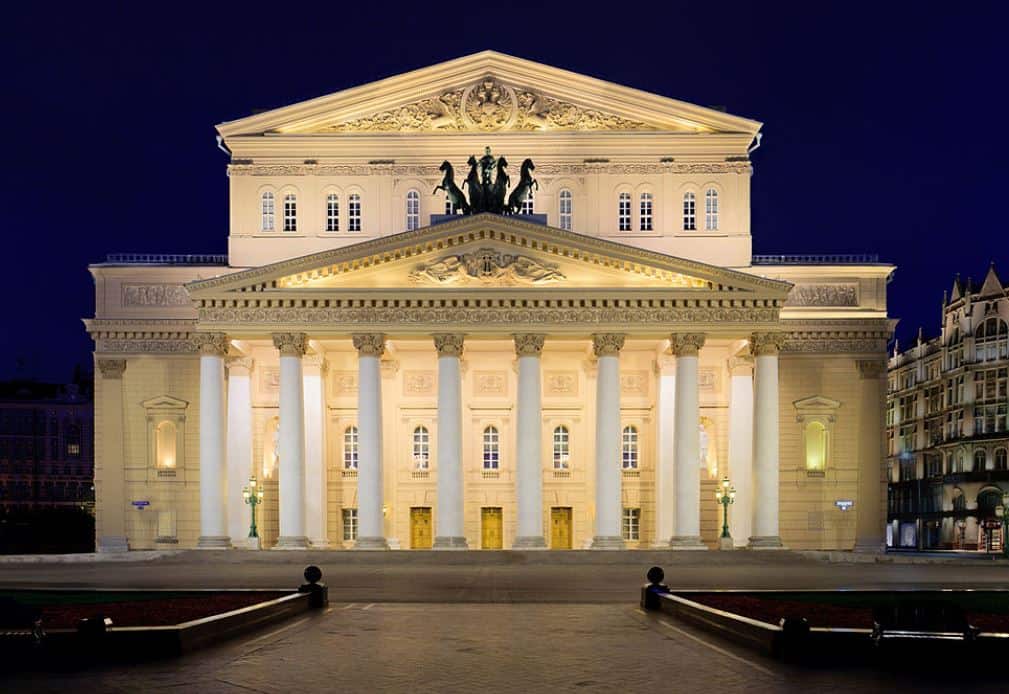
More interesting facts about the Bolshoi Theater
6. English entrepreneur and theater manager Michael Maddox didn’t go to Russia without a great track record. He had great success during the 1770s at the Haymarket Theatre in London.
He managed to acquire a share in the company established by Moscow Prosecutor, Prince Pyotr Vasilyevich Urusov, and established the theater in Petrovska Street, the reason why the original theater was called the “Petrovka Theater.”
7. The theater was part of multiple Imperial theaters of the Russian Empire. This all changed following the October Revolution and the theater ended up being renamed “State Academic Bolshoi Theater” on December 7, 1919.

8. The theater was equipped with a new stage in 2002, just before the major renovation project started. It was built to the left of the historic main stage of the theater and was first used on November 29, 2002.
9. The Bolshoi Theater is far from being the largest opera house in the world in terms of capacity as it only features 1,740 seats.
This does mean that the seats on the ground level are extremely comfortable with free-standing chairs. The places in the top sections of the venue only go 3 rows deep as well.
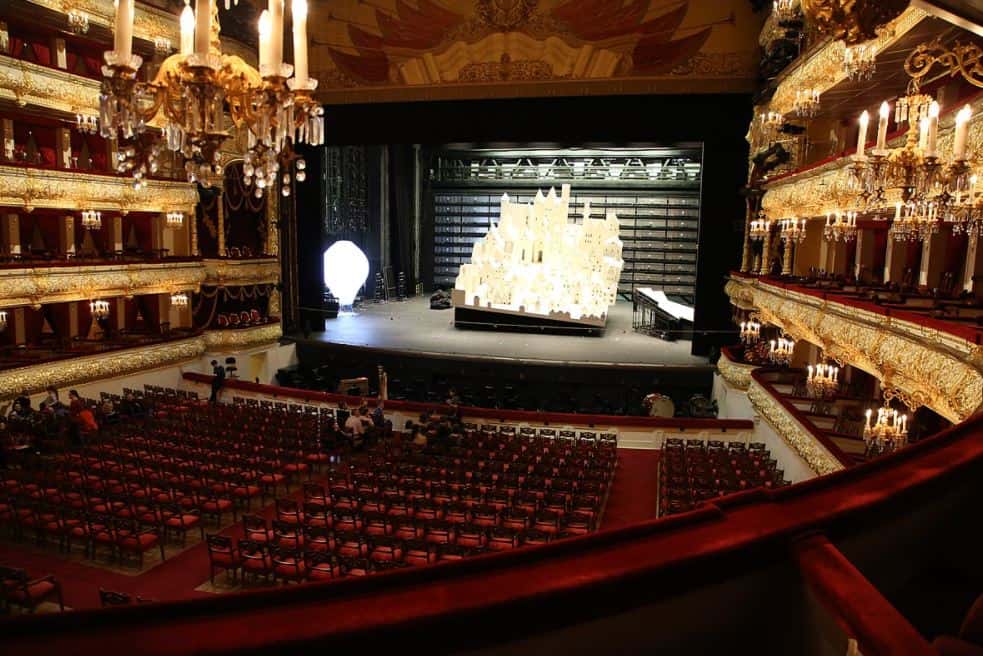
10. The extensive renovation of the structure didn’t go without controversy. The astounding cost of the renovation, which eventually turned out to be 16 times the initial estimate, raised a couple of eyebrows.
This eventually ended up in the main contractor being investigated after prosecutors alleged that he was paid three times for the same work.
11. The theater is one of the most iconic landmarks in Moscow, and even in all of Russia. This notion is emphasized by the fact that it has been featured on the 100-rubel Russian banknote.
The front of the banknote features the quadriga on top of the portico, the reverse features the entire Neoclassical structure.



